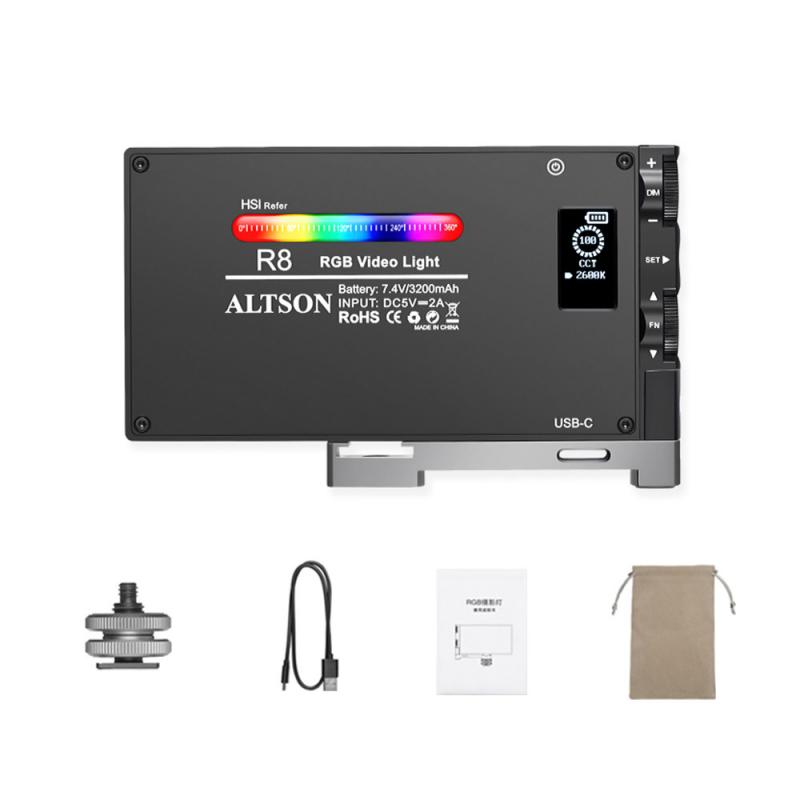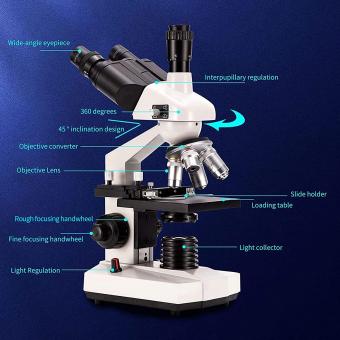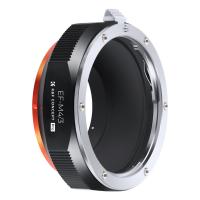How Many Times Can A Light Microscope Magnify ?
A light microscope can typically magnify an object up to around 1000 times.
1、 Total magnification of a light microscope
The total magnification of a light microscope is determined by the combination of the magnification of the objective lens and the eyepiece. The objective lens is responsible for the primary magnification, while the eyepiece further magnifies the image for the observer.
The magnification of the objective lens typically ranges from 4x to 100x, with common magnifications being 10x, 40x, and 100x. The eyepiece usually has a fixed magnification of 10x. To calculate the total magnification, you simply multiply the magnification of the objective lens by the magnification of the eyepiece.
For example, if you are using a 10x objective lens and a 10x eyepiece, the total magnification would be 10x multiplied by 10x, resulting in a total magnification of 100x. Similarly, if you are using a 40x objective lens and a 10x eyepiece, the total magnification would be 40x multiplied by 10x, resulting in a total magnification of 400x.
It is important to note that the maximum useful magnification of a light microscope is limited by the resolving power of the lens system. The resolving power refers to the ability of the microscope to distinguish between two closely spaced objects as separate entities. Beyond a certain point, increasing the magnification will not provide any additional detail and may even result in a blurry image.
In general, the maximum useful magnification of a light microscope is around 1000x. However, it is worth mentioning that recent advancements in technology, such as the use of oil immersion lenses and higher numerical aperture objectives, have allowed for higher magnifications and improved resolution. Some specialized light microscopes can achieve magnifications of up to 2000x or even higher.
It is important to consider that while higher magnification can provide more detail, it also comes with limitations such as decreased depth of field and reduced field of view. Therefore, the choice of magnification should be based on the specific requirements of the observation or analysis being conducted.

2、 Objective lens magnification in a light microscope
The magnification power of a light microscope is determined by the combination of the objective lens and the eyepiece. The objective lens is responsible for the primary magnification, while the eyepiece further magnifies the image for the observer.
The objective lens in a light microscope typically comes in different magnification powers, ranging from 4x to 100x or higher. The most common objective lens magnifications are 4x, 10x, 40x, and 100x. These magnifications refer to the number of times the lens can enlarge the image of the specimen being observed.
The eyepiece of a light microscope usually has a fixed magnification of 10x. When combined with the objective lens, the total magnification is calculated by multiplying the magnification of the objective lens by the magnification of the eyepiece. For example, if a 40x objective lens is used with a 10x eyepiece, the total magnification would be 400x (40 x 10).
It is important to note that the maximum useful magnification of a light microscope is limited by the resolving power of the lens system. The resolving power refers to the ability of the microscope to distinguish between two closely spaced objects as separate entities. Beyond a certain point, increasing the magnification will not provide any additional detail and may result in a blurry or distorted image.
In general, the maximum useful magnification of a light microscope is around 1000x. However, this can vary depending on factors such as the quality of the microscope and the type of specimen being observed. It is also worth mentioning that advancements in technology have led to the development of more powerful microscopes, such as electron microscopes, which can achieve much higher magnifications.

3、 Eyepiece lens magnification in a light microscope
A light microscope is a widely used tool in scientific research and education, allowing us to observe and study microscopic organisms and structures. One of the key features of a light microscope is its ability to magnify the image of the specimen being observed. However, the exact magnification power of a light microscope can vary depending on several factors.
The magnification of a light microscope is determined by the combination of the objective lens and the eyepiece lens. The objective lens is located near the specimen and is responsible for gathering light and forming the initial magnified image. The eyepiece lens, on the other hand, is located near the observer's eye and further magnifies the image formed by the objective lens.
The magnification power of the objective lens typically ranges from 4x to 100x, with the most common magnifications being 10x, 40x, and 100x. The eyepiece lens usually has a fixed magnification of 10x. To determine the total magnification of a light microscope, you simply multiply the magnification of the objective lens by the magnification of the eyepiece lens.
For example, if you are using a light microscope with a 10x objective lens and a 10x eyepiece lens, the total magnification would be 100x (10x objective lens magnification multiplied by 10x eyepiece lens magnification).
It is important to note that the maximum useful magnification of a light microscope is limited by the resolving power of the lenses and the wavelength of light being used. The resolving power refers to the ability of the microscope to distinguish between two closely spaced objects. Beyond a certain point, increasing the magnification will not provide any additional useful information.
In recent years, advancements in technology have led to the development of more powerful microscopes, such as electron microscopes, which can achieve much higher magnifications. These microscopes use beams of electrons instead of light to magnify the specimen, allowing for much greater resolution and magnification.
In conclusion, the total magnification of a light microscope is determined by the combination of the objective lens and the eyepiece lens. The maximum useful magnification of a light microscope is limited by the resolving power of the lenses and the wavelength of light being used. While light microscopes can provide magnifications of up to 1000x, the practical limit for most applications is around 100x.

4、 Maximum magnification achievable with a light microscope
The maximum magnification achievable with a light microscope is typically around 1000x. However, it is important to note that the actual magnification depends on various factors such as the quality of the microscope, the lenses used, and the specimen being observed.
Light microscopes use visible light to illuminate the specimen and magnify it using a combination of lenses. The lenses in a light microscope can typically provide magnifications of 10x, 40x, and 100x. By combining these lenses, the total magnification can be increased. For example, using a 10x eyepiece and a 100x objective lens, the total magnification would be 1000x.
It is worth mentioning that there are techniques such as oil immersion that can further enhance the magnification. Oil immersion involves placing a drop of oil with a refractive index similar to that of glass between the objective lens and the specimen. This reduces the loss of light and improves resolution, allowing for higher magnification.
However, even with oil immersion, the maximum magnification achievable with a light microscope is limited. This is due to the wavelength of visible light, which limits the resolution of the microscope. The theoretical limit of resolution for a light microscope is around 200 nanometers, which means that structures smaller than this cannot be resolved.
In recent years, advancements in microscopy techniques such as super-resolution microscopy have pushed the limits of resolution and allowed for higher magnification. These techniques use fluorescent markers and complex imaging algorithms to overcome the diffraction limit of light, enabling the visualization of structures at the nanoscale. However, these techniques are not considered traditional light microscopy and require specialized equipment and expertise.
In conclusion, the maximum magnification achievable with a light microscope is typically around 1000x, but this can vary depending on the microscope and the specimen being observed. Advances in microscopy techniques have allowed for higher resolution and magnification, but these techniques are not part of traditional light microscopy.







































